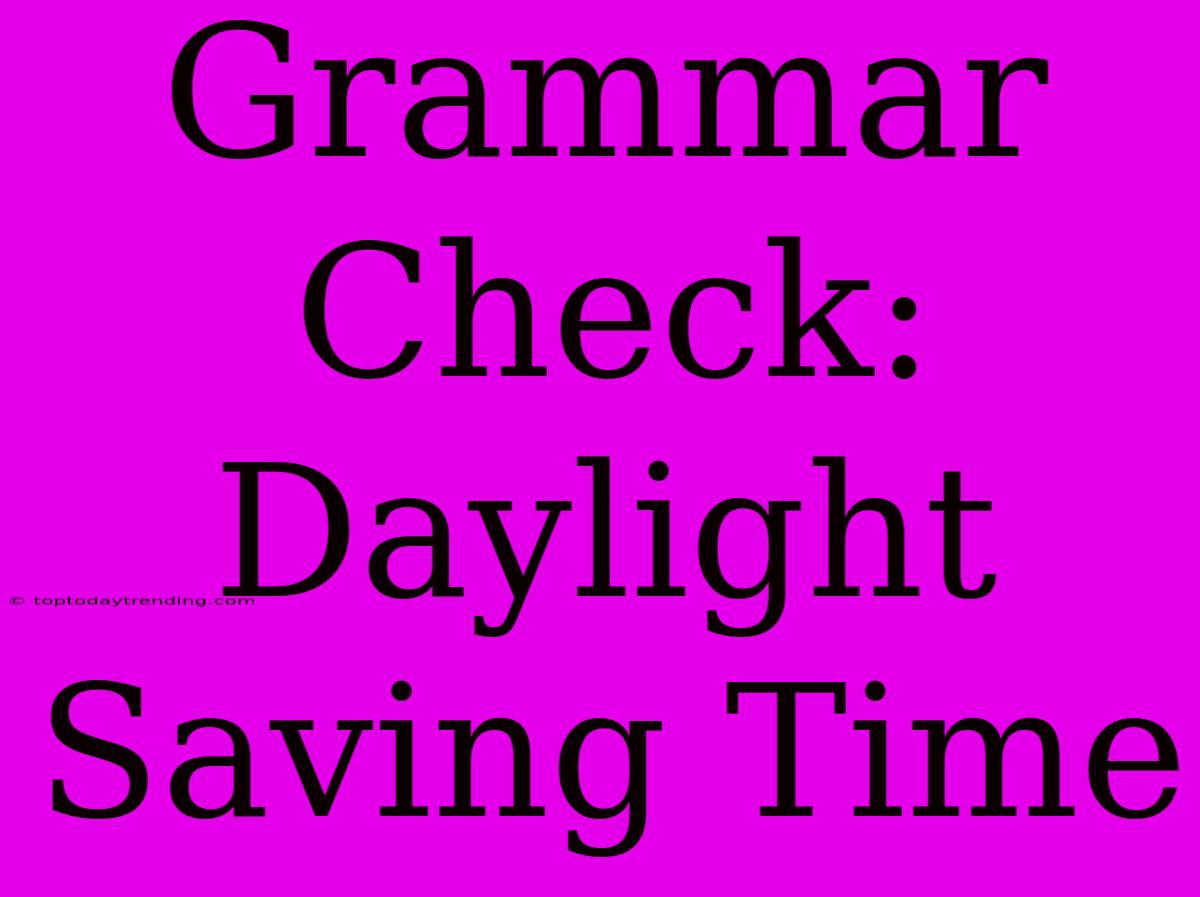Grammar Check: Daylight Saving Time
Daylight Saving Time (DST) is a practice that shifts the clock forward by an hour during the summer months. While it's meant to save energy and make better use of daylight hours, its effectiveness and even its name have been debated.
Here's a breakdown of the grammar commonly used when discussing DST:
- Daylight Saving Time - This is the official, full name of the practice. It's always capitalized, and the word "Saving" is singular, not plural.
- DST - The acronym is commonly used in place of the full name, and it's always capitalized.
- Standard Time - This refers to the time that is used during the rest of the year, when DST is not in effect. It is usually used in contrast with Daylight Saving Time.
- Spring Forward - This refers to the process of moving the clock forward by an hour when DST begins.
- Fall Back - This refers to the process of moving the clock backward by an hour when DST ends.
Some Common Grammar Errors:
- Daylight Savings Time - The correct term is "Daylight Saving Time", with a singular "Saving".
- Daylight saving time - While lowercase "daylight saving time" is acceptable in some contexts, it is best to stick to the capitalized and formal version "Daylight Saving Time" for clarity and consistency.
- Summer time - While commonly used, this is a less formal term and doesn't clearly refer to the official practice of Daylight Saving Time.
Tips for Clear Writing:
- When referencing Daylight Saving Time, use the full name or the acronym DST to avoid ambiguity.
- When referring to the process of changing the clock, use the terms "Spring Forward" and "Fall Back" for clarity.
- Be consistent in your use of capitalization and punctuation.
Example:
"Daylight Saving Time (DST) begins on the second Sunday of March in the United States. This means we 'Spring Forward' by one hour, effectively extending daylight into the evening. However, DST ends on the first Sunday of November, when we 'Fall Back' by an hour."
By correctly understanding and using the appropriate grammar, you can ensure clear and accurate communication about Daylight Saving Time.

